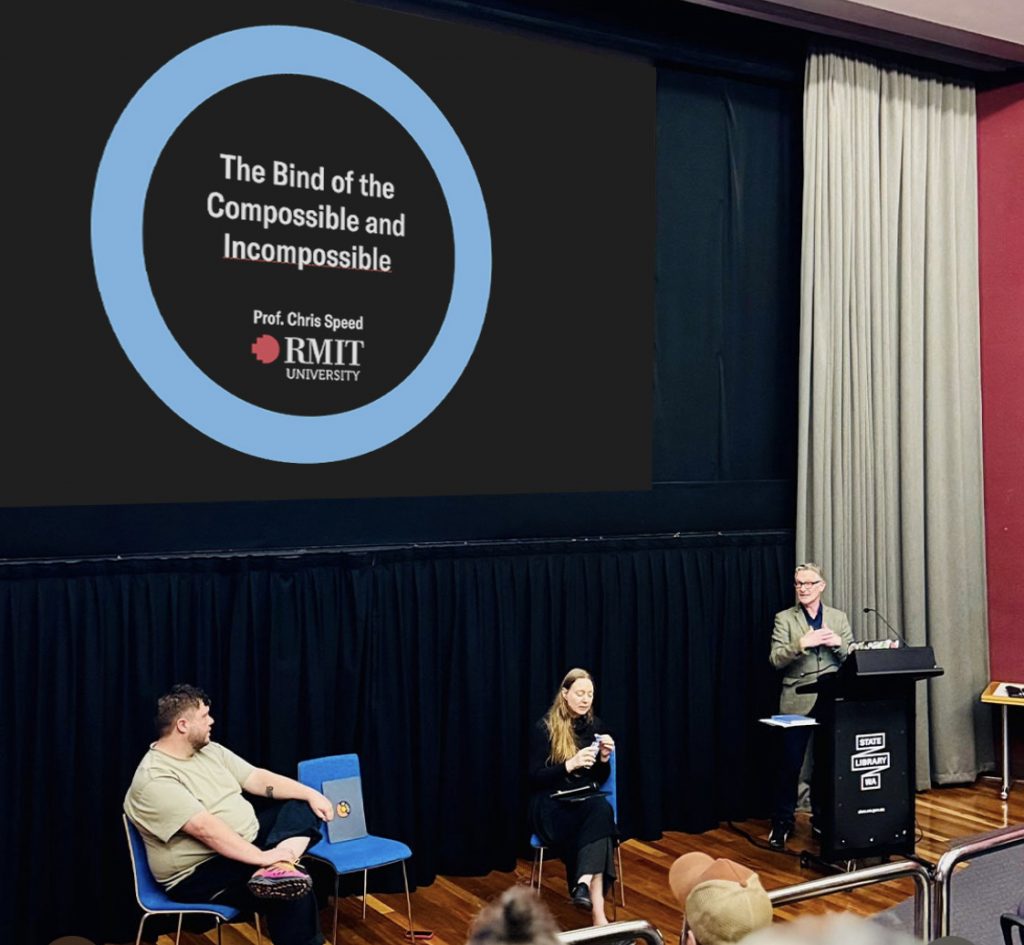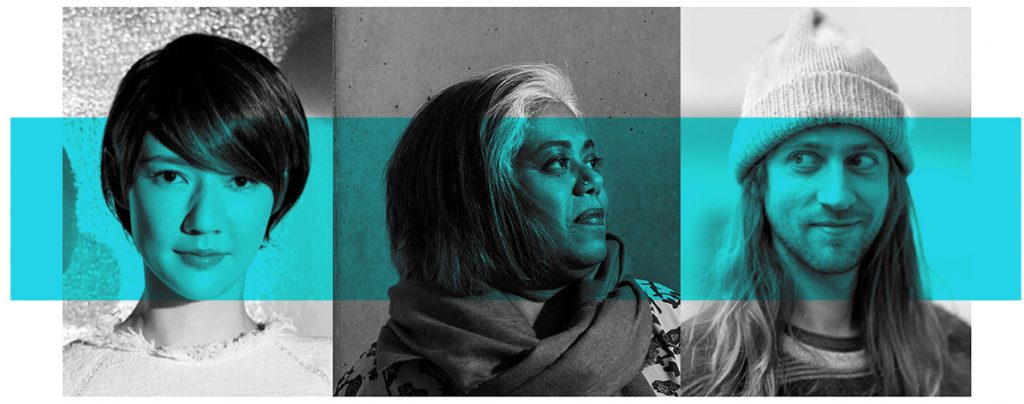“I miss you” / Design Performance
In February 2023 I was invited to contribute to a seminar / webinar curated by Dipali Mathur, a visiting Digital Scholarship Postdoctoral Fellow at the Institute for Advanced Studies in the Humanities (IASH). The event organised by IASH and the Centre for Data, Culture and Society (CDCS) at the University of Edinburgh was entitled: Re-materialising the Digital: An Interdisciplinary Dialogue on Actions, Challenges and Possible Futures (old Eventbrite link here may still provide full details).
The premise of the event is detailed below, scripted by Dipali:
As we become increasingly immersed in life online, the material reality of toxic harms to the lives and landscapes remains hidden from view. As we know, every stage of the process of producing, distributing, using, and finally disposing of digital devices creates a toxic legacy that has yet to be fully reckoned with. Invariably, the highly polluting stages in the production of digital technologies, from digging for ‘conflict minerals’ to dumping of digital debris in landfills, form the livelihoods of marginalized communities in developing countries of Africa, Asia and South America, where lax regulations enable the continued exploitation of vulnerable people and places. Moreover, the true environmental costs of sprawling energy-hungry and water-thirsty data centers, and the subterranean/marine wires and cables that give “life” to the Cloud, are becoming areas of study in themselves, through ‘critical infrastructure studies’ for example (e.g. Easterling 2014; Parks and Starosielski 2015). More broadly we can ask: what are the ways in which the digital and the virtual are transforming the material and the embodied?
Of course, the ‘digital’ was always inextricable from the ‘material’. The point of ‘re-materialising’, however, is to bring to critical attention the environmental and social burdens of our everyday, digitally-dependent lives. Re-materialising the digital therefore acknowledges the complexity of such problems, as being bound up with technoscientific, socio-cultural, and ethico-political issues. With acknowledged experts from around the world, this cross-disciplinary workshop invites you to engage in an afternoon of knowledge-exchange and conversation, to consider potential critical approaches, policy implications, and practical solutions to the problems of re-materialising the digital.
My own contribution consisted of a design performance in two parts framed through the following abstract:
The wonder that we have for our iPhones, Galaxies and Androids eclipses the challenges which are faced by communities and workers that are involved in the extensive networks which extract, process and supply factories with the rare minerals that make our phones work, and make them ‘wonder-full’. The separation between the social and environmental effect of mineral extraction, and the social and cultural affect that our phones stimulate for us is irreconcilable. Through a short design performance, Chris will explore this separation and attempt to short cut it through audience participation.
Act: 1: Popping your cherry
I was interested in a fact that AC Grayling had introduced during the Reparation and Equality panel, part of the Edinburgh Futures Conversations in October 2022, that a great deal of ‘water poor’ countries exacerbated their circumstances by fulfilling the demand to export exotic fruits by countries such as the UK. The water content of fruit is significant, and the mere concept of growing and shipping local water in the form of fruits for people thousands of a way seemed ridiculous, but also an interesting embodiment of the themes associated with the Re-materialising the Digital event.
“We import 42% of our vegetables and a startling 89% of our fruit, predominantly from water stressed countries where we are increasingly dependent on their precious water resources.” Sustainable Food Trust
Prior to the event I’d made contact with a previous student Esteban Serrano who was living in Villarrica in Chile. Esteban agreed to receive a bottle of Scottish water that I had drawn from a tap in the Design Informatics offices in exchange for Chilean fruit that contained the equivalent amount. On Friday 3rd of February is sent 500ml via DHL to Esteban. Over the weekend I bought a 650g box of cherries grown in Chile. Prior to part one of the Design Performance, assuming that 81% of cherries was made up of water, I calculated that 500ml of water would constitute 620g of cherries. During the performance I handed out the cherries, encouraging the audience to take one each and upon biting into the cherry, Esteban opened his bottle of water and poured it our of his window on Zoom, and directly on to Chilean soil – repaying the water debt.



Act: 2: “I miss you”
Retaining the extractive narrative, Act 2 extended the principle to the rare minerals that were likely to be in the smart phones of audience members. I reminded participants that “Copper is a vital element used to produce wiring for all kinds of electronics” (Natural History Museum), and it is most frequently sourced from open-cut mines in Chile, whilst Lithium, which is essential to the production of cathodes in lithium-ion batteries in smart phones, is also extracted from Chile.
With this knowledge in mind, I invited audience members to send a message from the copper and lithium in their phones directly back to Esteban’s phone who was closer to the source of the rare minerals.
The exchange of text messages outside of the UK/EU required ethical consent to protect both the sender and Esteban’s personal data, and only when audience members has signed the consent form did I give them Esteban’s Chilean phone number. Right at the end of the video you can hear the first of eleven ‘pings’ as the displaced minerals said “I miss you” to the minerals in Esteban’s phone…
Enormous thanks to Esteban who provided contextual information during the performances, and also put up with DHL and my international requests. Also thanks to Lucy Steeds, who is Director of Ethics at Edinburgh College of Art to help me navigate the consent required of Esteban and audience members.
Also important to pay credit to fellow speakers and IASH for organising the event:
1) Robert Porter (Research Director, Communication, Culture and Media Studies, Ulster University)
2) Sean Smith (Chair of Future Construction, School of Engineering, University of Edinburgh)
3) Michelle Keown (Professor of Pacific and Postcolonial Literature, Dept. of English, University of Edinburgh)
4) Mark Paterson (Associate Professor, Dept. of Sociology, University of Pittsburgh)
5) Dipali Mathur (Digital Scholarship Postdoctoral Fellow, IASH, University of Edinburgh)

Related posts

“This communication is not for you.”
Looking to connect 2 recent events / conversations (as is my want) this time to explore a fundamenta

Design Frequencies: Sharing International Practice in Design Research
Already deep into semester two here. Last semester School of Design RMIT College of Design and Socia

The Labour of the Rejected / “Walk the Plank”
Still playing catchup with so many events. A few weeks ago during hashtag#DIS2025, Mafalda Gamboa an

Design Contradictions
Two projects during Melbourne Design Week with collaborators Michael Dunbar and Liam Fennessy to exp

Paradox of Collaborative Speed
Two events in Melbourne over the past 10 days week revealed a tension across contemporary technology

Slow Materials, Slow Money: Can Design Decelerate?
Two events that I’m trying to tie together to glean some connections. The CHI panel on Regenerativ

From Food Networks to AI Governance
Back to reporting on events in Narme/Melbourne. From Food Networks to AI Governance: Reflections on

Planetary Pedagogies
Following the launch of PlanetaryCivics two weeks ago, this is the second extension to contributions

Space Debris to House Keys
Part 2 of catching up with the weeks of activity in Melbourne through February. From Space Debris to

Measuring our demise
Oh Melbourne, three parallel events that spanned the week: RMIT College of Design and Social Context